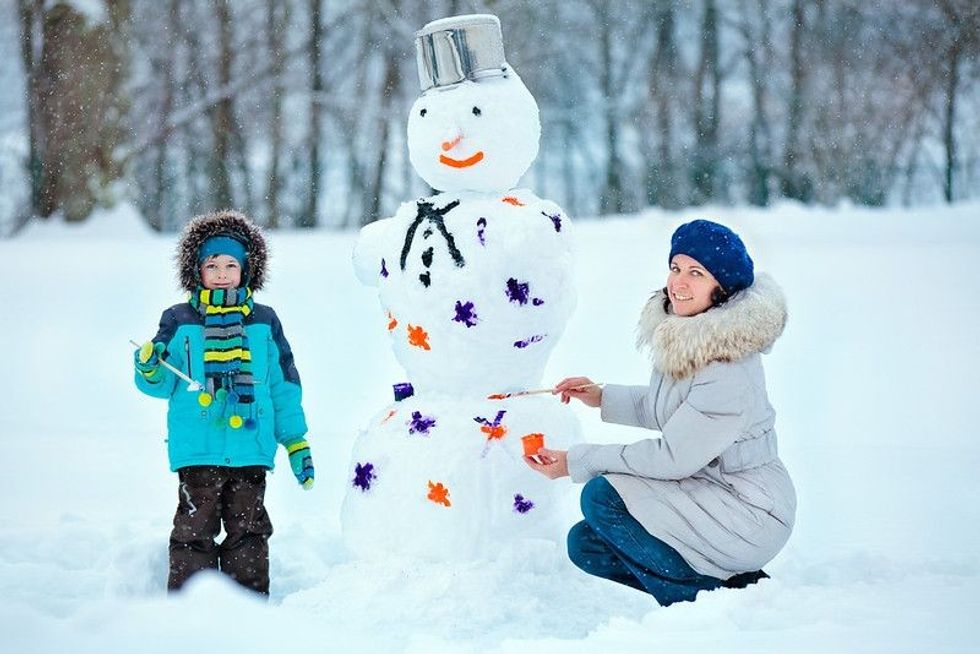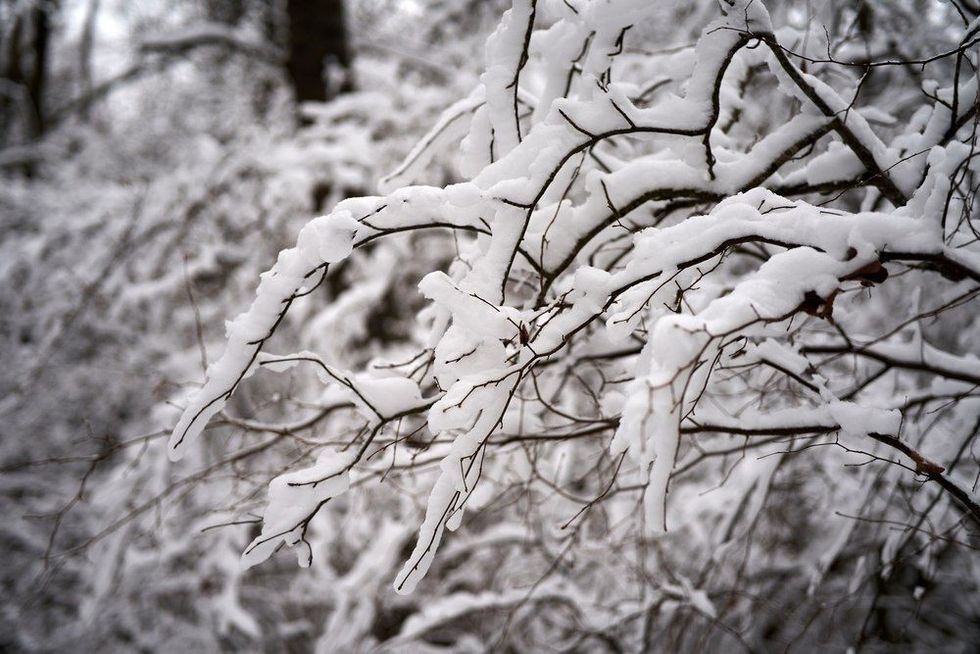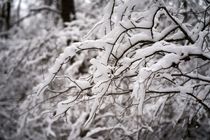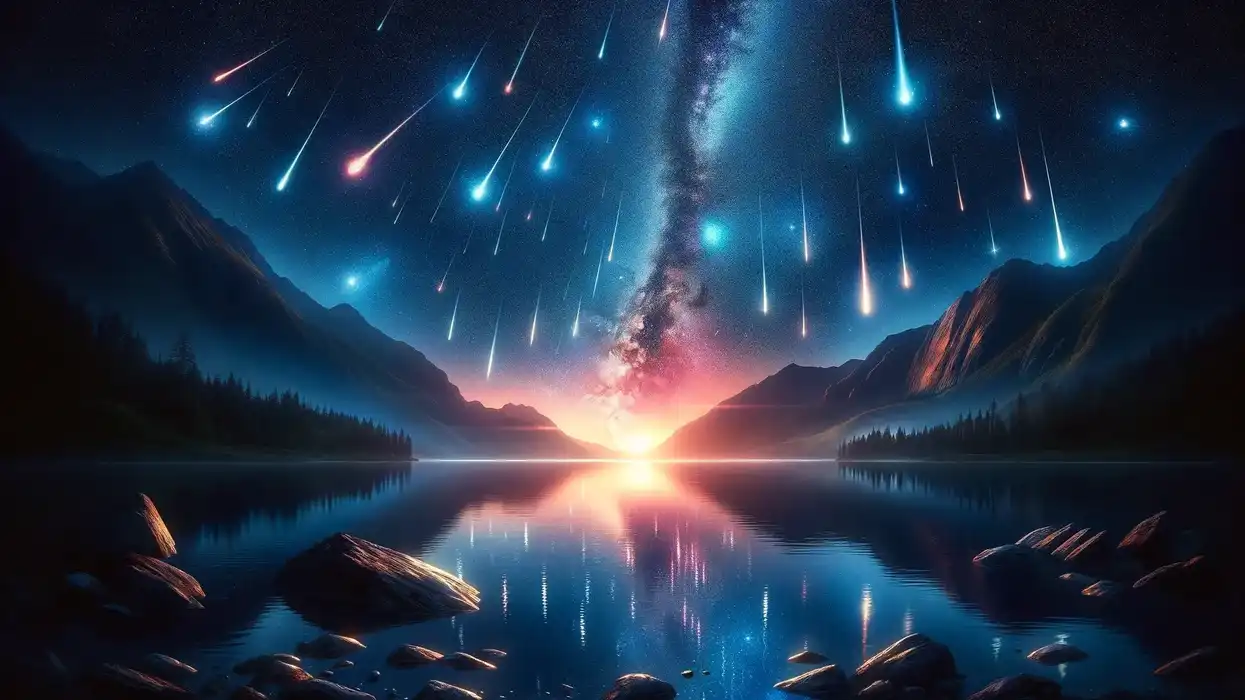Here Are Types Of Snow And Some Freezing Facts About It

As leaves turn to yellowish-brown, with hints of extremely cold weather, it's a sign of approaching winters and the season of snow in the Northern Hemisphere.
What is the first thought that crosses your mind when you wake up one morning to find the adjoining streets, rooftops, tree branches, and poles covered from tip to toe with a thick layer of fresh snow? Would you head outdoors to take advantage of playing in the new snow or stay indoors?
As a child, did you fantasize about making a cute little snowman with a carrot for its nose? Perhaps you imagined Santa Claus being carried along the snow-clad streets on a reindeer-drawn sled?
Winter can bring with it lots and lots of snow and extreme cold and it is often associated with long awaited important dates. For example, Christmas, Hanukkah, and New Year holidays. Winter activities in the western world can lack exuberance without the inclusion of mesmerizing white snow fall.
A good amount of snowfall, a thick snow cover, and a smooth snow surface attracts both children and adults to ski resorts, making way for numerous thrilling recreational activities like skiing, sledding, ice skating, and ice fishing. The fun and excitement of snowballing with siblings are incomparable!
You can even create snow angels if there's a heap of fluffy, soft snow in the backyard. Some people believe that yodeling can cause an avalanche, but is there any truth behind this belief? Absolutely not!
No matter how loudly you sing while trekking on snow, it's not going to bring an avalanche, but a wrong footstep might. Weight is perhaps the most important agent that can trigger an avalanche.
People often confuse snow and ice because both are just frozen forms of water. Unlike snow, a mass of freezing cold ice can be found in the form of lumps or sheets of frozen water.
However, snow has certain properties and comes in innumerable forms that are equally amusing. Time to explore the versatile characteristics of snow.
If you just can't get over the snowy winters, then snuggle up under your warm blanket and explore these fascinating facts about what causes snow and snowflakes facts.
Different Types Of Snow
What did you do when snow formed in the previous snow season? Snow that forms piled up on the grounds comes in numerous shapes and sizes, depending primarily upon the weather condition and moisture content. Let's explore the various types of snow so that you can fully appreciate snow when it comes next time!
Wet Snow: This type of snow has a high amount of moisture content and is extremely dense. The formation of this snow occurs when the temperature of the cloud is somewhere around freezing point.
During the formation process, innumerable flakes collide against each other and consequently combine to produce a bigger and heavier white flake with small crystals sticking to the sides. Most of the heavy snow that you'll find stacked up on the streets are the wet kind.
This type of snow is ideal for making snowmen but not great for creating snowballs as it's too hard. Throwing hard snowballs at each other can prove quite painful!
Spring Snow: Slushy in nature, this kind of snow is composed of granular snow crystals that can be found during the spring and summer seasons. This snow has a high moisture content, so when the temperature gets warmer, the snow becomes slushier with water. The lower sections of most mountains are composed of slushy snow.
Powder Snow: When there is less moisture in the air, and the weather conditions are dry, the crystals are unable to fuse with each other to form larger flakes.
This is why the powder snow is smaller in size and more granulated in form. The loose powder snow is best suited for skiing as the snow doesn't stick, while the wet snow or spring snow should preferably be avoided on slopes to avert danger.
The best option is to go skiing or snowboarding in a ski resort, and you can even take your kids there for some fun family time.
Packed Powder: Packed powder is a form of powdered, dry snow where the snow grains retain compactness and softness, unlike wet snow. It doesn't become hard, so when you make snowballs out of it or just fall on it, it doesn't hurt.
Light Snow: As the name suggests, light snow is the fluffy, soft kind that spreads easily and can stretch over large distances.
Did you know that snow is known by several names? Some names include watermelon snow (which is pinkish in color), styrofoam, cold smoke, pow-pow, and cauliflower snow (lumpy powder found near snow cannons).
For instance, dirty snow, that you often find in car parks or on the side of the street is often referred to as snirt or brown snow.
Various Sizes Of Snow
Snow is also available in multiple forms and can be classified according to its distinct shapes and sizes. Let's take a look at some of the different shapes and sizes of snow:
Snowflakes: Snowflakes are simply ice crystals that come in either single or cluster forms that are discharged from the clouds. Some prominent varieties of snowflakes include simple prisms, needles, sectored plates, stellar dendrites, stellar plates, triangular crystals, and some others.
Graupel: Small crystals of snow, more commonly called snow pellets or sometimes soft hail, are graupel. Formation of graupel takes place when droplets of water combined with the minute pellets. These are more rounded and opaque, often confused with hail.
The best way to distinguish between hail and graupel is in the snow textures. The texture of graupel is comparatively softer and crumbly than hail. These snow pellets measure around 0.1-0.2 in (2-5 mm) in diameter.
Hoarfrost: Interestingly, hoarfrost is formed from accumulating ice crystals that develop on surfaces like tree branches, poles, plant leaves, and stems, and other places when the temperature of the surface is comparatively lower than the freezing point of the air. Frost formation occurs as tiny ice crystals interlock with each other and deposit on external objects.
Polycrystals: These snowflakes are solid ice crystals that are constituted by innumerable crystallites or ice crystals of varied orientation and size. After depositing on the external surface, the shape of snow is also determined by the prevailing weather conditions such as the temperature, amount of sunshine, blowing wind, and others.
Meteorologists have charted out ten types of snow formations that have been detailed.
Crust: The crust refers to the frozen layer of snow that forms a hard, solid surface with layers of soft underlying snow. The crust is actually formed as a result of natural action involving the sun, rain, and wind.
Snow Bridge: When snow is deposited in the crevasses, cracks, or fissures of terrain, it gradually obscures the opening to develop an arc-like shape. Generally, snowdrifts cause the formation of a snow bridge where the snow eventually fills up the gap till it reaches the opposite end, ultimately resembling a bridge.
Sastrugi: Sometimes erosion brought about by winds and irregular deposition of snow leads to the formation of ridges or grooves. These snow formations called Sastrugi are often very delicate.
Cornice: When windblown snow, as well as ice, combines to form an extensive overhanging structure at the edges of cliffs or ridges, it takes up the cornice shape.
Ripple Marks: Have you noticed ripple marks on sandy areas? Similar corrugated marks can be traced on surfaces of snow. These markings are the resultant of the wind action.
Snow Roller: Classified to be one of the rarest meteorological formations, snow roller refers to natural cylindrical snowballs.
The cylindrical shape is acquired when a lump of snow descends down the hill or is rolled along by the force of the wind. The size of a snow roller can resemble that of a cricket ball, while it can also gather large amounts of snow to exceed the size of a small four-wheeler.
The snow roller is also known by other names like snow nut, snow bale, wind snowball, and snow donut.
Penitents: Penitents can be described as tightly packed tall and thin structures formed from hardened snow. They come in the shape of pinnacles, with each pinnacle measuring between some inches to some feet. Expansive penitent fields can form over snow-clad or glaciated regions. For instance, the mountains that encircle the Californian Death Valley.
Sun Cups: As the name goes, sun cups are caused as a result of melting away of the surfaces of snow due to intense sunshine. The action of the sun creates bowl-like hollow depressions on the snow surface. However, the depressions are not too deep. Rather, they're comparatively wider.
Megadunes: Like vast sand dunes, mega dunes are massive dunes that are composed of large-sized snow crystals with an average measurement of 0.8 in (2 cm) across. Megadunes can be found spread across Antarctica.
Snow Barchan: A snow barchan is nothing but a snowdrift shaped like a crescent or a horseshoe with both ends pointing downwards.
Some other types of snow formations include pillow drift, hominy snow, corn snow, finger drift, dendrite, and others.

The Process Of Snowfall
Who doesn't like to dance around in snowfall but have you ever spared a moment to think about the process by which snow formation takes place? Why do some places around the world get snowfall while others don't? Here's all you need to know about snowfalls and differing snow conditions.
There are some people who are terrified of snowfall, usually stemming from a past accident or childhood trauma. This psychological condition is termed 'chionophobia' where the term 'chion' has its roots in Greek, meaning 'snow'.
In this condition, people instill the fear of getting buried or trapped under a pile of snow. However, just like heavy rainfall, snow formations also follow a specific cycle or pattern.
Natural snow is also produced from water vapor that ascends high up in the sky to form clouds. When the temperature of the atmosphere drops below the freezing point, that is, zero degrees celsius, the liquid water freezes to ice crystals.
As the ice crystals grow heavy, the clouds become incapacitated to hold them any longer, and they come down as snowfall. The opportunity of witnessing and experiencing snowfall is nothing less than magical, especially for people who reside in warmer tropical climates.
Many people find it comforting to snuggle up on a chair near the fireplace with a steaming cup of coffee, watching the snowfall in complete solitude.
However, not all snowfalls are appealing to everyone and some can be pretty catastrophic for many areas around the world. We can therefore distinguish snowfalls into different types.
Alarge quantity of snowfall is brought about by a snowstorm, while a blizzard is an extremely violent form of a winter storm that can stretch for around three hours or more. A blizzard is highly destructive because of its strong winds that are infused with cold, blowing snow, and subfreezing temperatures.
The blowing snow hinders visibility to a great extent (approximately 0.25 mi or 0.40 km).
Another form of snowfall is a snow flurry. Very little accumulations are witnessed during snow flurries because a snow flurry continues for short and irregular intervals at varying intensities.
On the other hand, a snow squall brings an intense snowfall, mostly accompanied by strong winds that affect visibility. Although the snow squall doesn't normally last for a long time, it can cause a lot of damage due to the windblown snow.
A snow burst is quite similar to a snow squall, but it often leads to a rapid accumulation of snow as a result of an intense snow shower. Blowing snow and drifting snow are the two chief defining features that can be during a winter storm.
Blowing snow is defined by airborne particles of snow that remain at a greater elevation above the surface raised and stimulated by strong winds.
In contrast, drifting snow is represented by snow particles on the ground that are carried by strong winds, but at a comparatively lower height of about 5-6.5 ft (1.5-2 m). In case of blowing winds, visibility can be severely affected.
The worst winter storm to be recorded in history was a blizzard in Iran in February 1972. The blizzard lasted for a week, causing widespread destruction. Several villages became completely inhabitable and many people perished. The winter storm claimed more than 4,000 human lives.
Falling snow can undoubtedly transform the ambiance of the surroundings, but before stepping out into a snowfall, be aware of the weather forecast. Steer clear and stay inside if there's a large winter storm predicted, as well as blowing snow.
Interesting Facts About Snow
You must have observed layers of new snow piling on top of previous or old snow. Did you know that the snow cover or snowpack has also been segregated from each other based on their characteristics? Here are some lesser-known fun facts about snow.
A fresh snow deposit where the ice crystals can be identified in their original state is popularly known as new snow, whereas old snow represents the layer of snow that has undergone changes to such a degree that its original state remains undeciphered. On the other hand, seasonal snow implies the accumulation of snow for just one season.
Seasonal snow doesn't last long enough, whereas perennial snow stays in place for several years. Although not as long-lasting as perennial snow, the old snow remains for quite a while.
Do you know which snow forms glaciers? It's firn. When a Névé successfully completes an entire melt season, we regard it as firn. Firn is snow that has been around for more than a year and is denser and more compact. Névé is basically granular snow that goes through the processes of melting and freezing, followed by compacting.
One of the most unique properties of snow is that it greatly affects sound flow. Sound waves are absorbed by deposited snow, which helps in covering the surroundings in pin-drop silence.
That's why after a refreshing snowfall, nature becomes mesmerizing and ultra peaceful. However, as the snow gradually starts melting, accompanied by refreezing, the ice sheets reflect those sound waves, enabling the clearer sound to traverse greater distances.
Now, did you know that snow isn't actually white? In fact, snow doesn't possess any coloration. Snow is formed from frozen ice crystals that are translucent. Then how does it appear white?
When sunlight scatters on snow, all the colors are reflected by the light that induces visibility. This offers snow its serene white appearance. Another intriguing fact is that the ice crystals of snow are six-sided.
Are you aware that despite being freezing cold, snow acts as an excellent insulator? Air makes up for 90-95% of the snow. A thick layer of snow slows down the heat transfer procedure considerably, therefore, obstructing the external biting icy wind. That's why igloos are made of snow.
Some animals also burrow or construct caves of snow where they spend the rest of the winter engaging in hibernation. Most bird and butterfly species can't stand the coldness of snow, so they migrate to warmer tropical climates before the beginning of winters.
Some mammals, like the Japanese macaques, commonly called 'snow monkeys', simply adore snow conditions as they can be spotted playfully fighting and competing with snowballs.
Too much exposure to snow or icy cold weather isn't a good thing. Prolonged exposure can cause Arctic hysteria or piblokto which is a common disorder among the Inuit people residing in the Arctic Circle. The symptoms of this disorder include repetitive verbal utterances along with irrational and rash actions, which can often lead to amnesia.
Here at Kidadl, we have carefully created lots of interesting family-friendly facts for everyone to enjoy! If you liked our suggestions for here are types of snow: that will surprise you!, then why not take a look at thundersnow facts, or snowstorm facts?
We Want Your Photos!
More for You
See All
Bachelor of Arts specializing in English Literature

Akinwalere OlaleyeBachelor of Arts specializing in English Literature
As a highly motivated, detail-oriented, and energetic individual, Olaleye's expertise lies in administrative and management operations. With extensive knowledge as an Editor and Communications Analyst, Olaleye excels in editing, writing, and media relations. Her commitment to upholding professional ethics and driving organizational growth sets her apart. She has a bachelor's degree in English Literature from the University of Benin, Edo State.
Disclaimer
1) Kidadl is independent and to make our service free to you the reader we are supported by advertising. We hope you love our recommendations for products and services! What we suggest is selected independently by the Kidadl team. If you purchase using the Buy Now button we may earn a small commission. This does not influence our choices. Prices are correct and items are available at the time the article was published but we cannot guarantee that on the time of reading. Please note that Kidadl is a participant in the Amazon Services LLC Associates Program, an affiliate advertising program designed to provide a means for sites to earn advertising fees by advertising and linking to Amazon. We also link to other websites, but are not responsible for their content.
2) At Kidadl, we strive to recommend the very best activities and events. We will always aim to give you accurate information at the date of publication - however, information does change, so it’s important you do your own research, double-check and make the decision that is right for your family. We recognise that not all activities and ideas are appropriate for all children and families or in all circumstances. Our recommended activities are based on age but these are a guide. We recommend that these ideas are used as inspiration, that ideas are undertaken with appropriate adult supervision, and that each adult uses their own discretion and knowledge of their children to consider the safety and suitability. Kidadl cannot accept liability for the execution of these ideas, and parental supervision is advised at all times, as safety is paramount. Anyone using the information provided by Kidadl does so at their own risk and we can not accept liability if things go wrong.
3) Because we are an educational resource, we have quotes and facts about a range of historical and modern figures. We do not endorse the actions of or rhetoric of all the people included in these collections, but we think they are important for growing minds to learn about under the guidance of parents or guardians.







